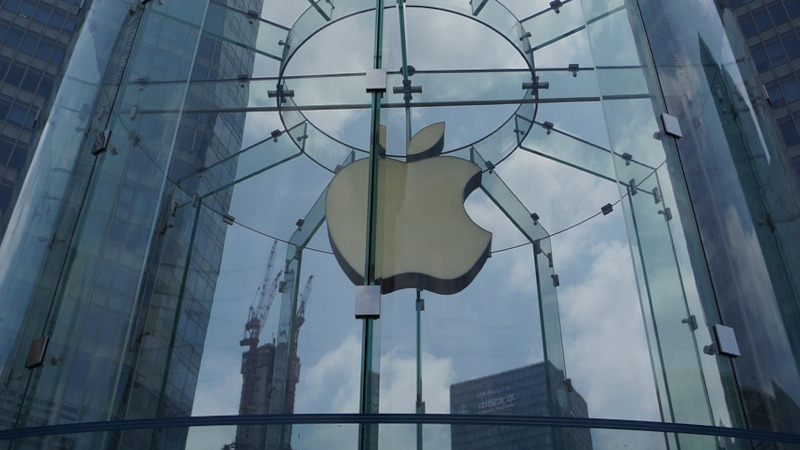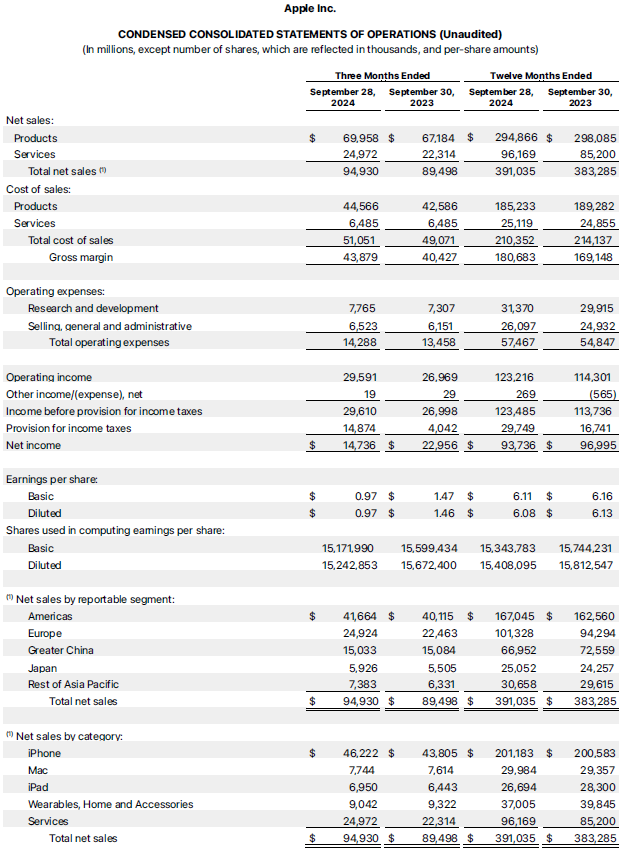Apple reported results for the third quarter of 2024 and exceeded analysts’ expectations on key financial indicators. Its revenue reached $94.93 billion, exceeding estimates of $94.58 billion, and earnings per share were $1.64, also above expectations of $1.60. However, the company’s net profit fell due to a one-time tax charge in Europe, sending shares down 2%. During the reporting period, the company also recorded increased interest in the new iPhone 16 line.

Image source: beludise / Pixabay
IPhone sales again played a key role in the company’s overall revenue, which grew 6% year-over-year to $46.22 billion, higher than experts’ forecast of $45.47 billion. This growth is partly due to increased demand for the new iPhone 16 line. which went on sale on September 20. Apple CEO Tim Cook noted that iPhone 15 sales last quarter were better than the iPhone 14 in the same period the previous year, and the new iPhone 16 is showing even stronger demand. Overall, the iPhone remains Apple’s top product, accounting for nearly 49% of its total revenue.
In addition, Cook emphasized the importance of Apple Intelligence’s AI capabilities, which recently became available on Mac computers and iPhones as part of the iOS 18.1 update. According to him, users switched to the new version of iOS twice as fast as iOS 17.1 last year, and feedback from users and developers remains positive.
In the fourth quarter, Apple forecasts moderate revenue growth; At the same time, it is expected that the growth rate of revenue from services will remain at the level of 12.87%, as in the previous year. In the third quarter of 2024, the company’s net income amounted to $14.73 billion, or 97 cents per share, which is lower than last year’s figures ($22.96 billion, or $1.47 per share). At the same time, adjusted earnings per share, excluding one-time tax payment, increased by 12% year-on-year. During the reporting period, the services segment, which includes iCloud subscriptions, Google search advertising revenue and AppleCare warranty coverage, brought in $24.97 billion for the company, up 12% year-over-year, although that amount was below the $25.28 billion forecast.

Image Source: Apple
IPad sales showed the largest revenue growth among Apple devices, increasing 8% to $6.95 billion. This rise was partly due to pent-up demand. Apple released new iPad Pro and Air models in May after going all of 2023 without introducing new iPad models. Mac revenue increased 2% to $7.74 billion, largely driven by strong sales of the MacBook Air with new chips introduced in the spring.
Revenue in the Other Products category, which includes AirPods, HomePod speakers and Apple Watch smartwatches, reached $9.04 billion, down 3% year-over-year and below analysts’ expectations. Although the company introduced updated Apple Watch and AirPods models at the same time as the new iPhone line, interest in these products was lower than expected.
Apple’s revenue in mainland China, Taiwan and Hong Kong fell 1% to $15.03 billion, raising concerns among investors. Increasing competition from local manufacturers such as Huawei poses serious challenges for Apple in this strategically important region, its third largest by sales.
During the quarter, Apple spent $29 billion on share repurchases and dividend payments as part of its strategy to support share price and strengthen shareholder interests. The company’s financial reserves have reached $156.65 billion, which gives it the ability to maintain independence in the face of growing competition and difficult economic conditions.
Going forward, Apple will likely focus on strengthening its position in AI and services. However, given the increasing competition in the Asian market, the company will have to look for new approaches and introduce innovations to maintain its position in the rapidly changing technological landscape.